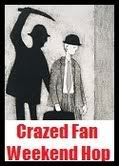I recently struck up a conversation with a fellow Etsier and our chat turned to the art of good photography. I gave her a few bits of information I’d picked up in the last year or so, but she asked about lighting and composition and I had to admit I was still learning that one. Given the importance of good photographs on Etsy, I thought I’d write an article to share my own experiments so that some of you might learn from my process.
Before I get started I’d like to comment first on just how critically important good photographs are to being successful on Etsy. When you become an Etsy seller your showroom window is a tiny image, a little more than an inch square. That’s not much real estate, so you have to make the most of it. Your primary image of your item is your one and only chance to bring traffic into your store. If your image does not capture the attention or imagination of the viewer and make them want to click, it won’t matter how wonderful your description or creative your items or how beautiful your workmanship. All of that will be for naught because no one will ever see those things if they do not first click.
I know this is a lot of pressure, but the good news is there are a lot of resources out there to help you perfect your photography skills. Etsy sellers are unfailingly helpful to one another and love sharing their tips and techniques with others. However one area that I seems to be a bit lacking in information is that of composition and lighting. So, I thought that’s what I would discuss here, along with some pictures of my set up and the various results I achieved. I hope this information will be helpful to you in improving your pictures.
Also, don’t be discouraged and try not to feel overwhelmed. Photography is an art form like any other and takes many years to perfect. Give yourself a break and realize that it takes time and a lot of missteps before you get it right. Even then, you’ll always learn more and get better and better.
To start I wanted to show you a photo of the area I use to take most of my photos. I have an eastern facing window in my apartment that gets beautiful light. Sometimes my morning photos are terrific and sometimes I have problems. I decided to use the morning light for this article because I think it better illustrates how lighting can be used, and what to watch out for.
As you can see in this photo there is an area that is brightly lit by the sun and another that is shaded. When I have taken photos in the brightly lit area I am rarely satisfied with them. It creates hard shadows that make it difficult to discern the details of the item and are oftentimes distracting and confusing to the eye.
 |
| Example of a photo taken in the brightly lit portion of the table. |
By moving the item into the shaded portion of the table I get the picture below.
 |
| Much better photo with softer shadows that make it easier to see the object. |
With softer shadows it’s easier to see the item, but there is still a nice effect from the light.
I positioned the item in front of the window and shot at an angle toward the window. This created the brightly lit background you see in the above image. Some of my best photos have taken advantage of this lighting effect.
 |
| This is an example of the exact placement of the object and location of the camera in relation to the window (light source) |
 |
| Example of photo shot with the placement above. |
 |
| Example of position of item and camera shooting too directly into the light. |
 |
| Result of the positioning above. See the white light spots? |
To avoid this I angled the block to capture more light on its face and moved the camera so I wasn’t shooting so directly into the light.
 |
| I angled the block and moved the camera. |
This is the result of the changes made above. You can see it’s a much better picture and I no longer have the white spots.
 |
| Much better photo. Still well lit, but much more definition and no light spots. |
As you can see, there is a great deal of trial and error to the process. I hope that by sharing this information I can help you to shorten your learning curve a little bit and help you on your way to great photos and lots of clicks



Perfect! Exactly what I need. Pictures, graphics, arrows, examples, descriptions. Thank you thank you thank you!
ReplyDeleteNow, I'm waiting for more. I just know you have other secrets to share.